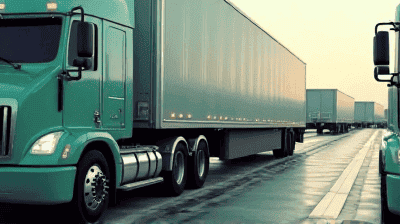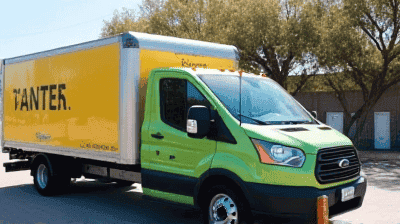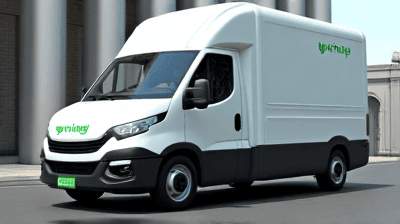
The rapid expansion of e-commerce and a surge in online shopping have transformed the logistics and transportation industries. As the demand for faster and more efficient delivery services grows, so too does the urgency to address the environmental impact of freight transportation. Delivery trucks and vans, often powered by diesel engines, contribute significantly to greenhouse gas emissions, air pollution, and noise in urban areas. In response, the industry is witnessing a shift toward electrification, with many companies exploring electric vehicles (EVs) as a green alternative.
Freight electrification refers to the transition from traditional fossil fuel-powered delivery vehicles to electric-powered alternatives. This transformation includes both fully electric trucks and vans as well as hybrid models that combine electric engines with conventional internal combustion engines. Electric freight vehicles are designed to reduce emissions, optimize efficiency, and minimize the environmental impact of logistics operations.
The transport sector accounts for a significant portion of global greenhouse gas emissions, with freight transportation being one of the largest contributors. As urban areas continue to grow and the demand for goods increases, finding sustainable solutions for freight logistics is crucial to combatting climate change, improving air quality, and promoting public health.
Battery Electric Vehicles (BEVs): These vehicles are powered entirely by electric batteries and produce no tailpipe emissions. They are recharged through charging stations and come in various sizes suitable for different delivery needs.
Plug-in Hybrid Electric Vehicles (PHEVs): PHEVs combine an electric motor with a conventional gasoline or diesel engine. They can operate on electric power alone over short distances and switch to traditional fuel for longer trips, providing flexibility in urban and rural deliveries.
Light-Duty and Medium-Duty Trucks: E-commerce companies and logistics providers are investing in light-duty vans and medium-duty trucks that can meet the demands of urban delivery while minimizing emissions.
Heavy-Duty Trucks: Although still in the early stages of mainstream adoption, electric heavy-duty trucks are being developed for long-haul and regional deliveries, with prototypes being tested by several manufacturers.

One of the primary advantages of freight electrification is its potential to significantly reduce greenhouse gas emissions. Electric vehicles produce zero tailpipe emissions, and when charged using renewable energy sources, their overall carbon footprint can be drastically minimized. Transitioning to electric delivery trucks and vans can contribute to creating cleaner urban environments and achieving climate targets.
Delivery trucks and vans are major sources of air pollutants, including nitrogen oxides and particulate matter. Electrifying these vehicles helps improve air quality, particularly in densely populated urban areas where traffic congestion and pollution pose significant health risks. Reducing reliance on diesel engines can help mitigate respiratory diseases and improve overall public health.
While the initial purchase price of electric delivery vehicles may be higher than their conventional counterparts, they can yield significant savings in the long run. Electric vehicles typically have lower operating costs due to reduced fuel expenses and maintenance needs. With fewer moving parts, electric engines are less prone to mechanical failure, leading to lower repair and maintenance costs.
Electric delivery vehicles operate more quietly than traditional trucks, thereby reducing noise pollution in urban settings. This can enhance the quality of life for residents in busy neighborhoods and help logistics companies meet noise regulations.
As consumer awareness and concern about climate change grow, many customers are seeking environmentally responsible options for the products they purchase. Companies that adopt electric delivery vehicles can enhance their brand image, appeal to eco-conscious consumers, and demonstrate a commitment to sustainability.
Range anxiety remains a significant concern for companies considering electric delivery vehicles. Many electric trucks and vans still face limitations in terms of range compared to traditional vehicles. While battery technology is advancing, ensuring that electric vehicles can handle the demands of various delivery routes is essential.
The deployment of electric delivery vehicles requires a robust charging infrastructure to ensure that fleets can operate efficiently. Insufficient charging stations can hinder the growth of electric freight. Logistics companies and cities must collaborate to establish charging networks that accommodate the needs of electric delivery vehicles, including fast-charging options.
The initial costs of purchasing electric delivery vehicles can be a barrier for some companies, especially smaller businesses and startups. While the long-term savings may offset these costs, businesses must balance upfront expenditures with their financial capabilities. Financial incentives and government support can help alleviate this challenge.
The transition to electric delivery vehicles may require workforce training to ensure that employees are familiar with new technologies, safety protocols, and maintenance practices. As fleets adopt electric alternatives, logistics companies must invest in training programs to equip their workforce for the future.
Existing regulations may not always support the rapid adoption of electric delivery vehicles. Policymakers need to establish clear guidelines, incentives, and standards for electric freight to promote growth in this sector. Market dynamics, including competition with conventional vehicles, can also impede the transition.

Examining successful implementations of electric delivery vehicles helps illuminate best practices and strategies for overcoming challenges. Many companies and cities are actively innovating to integrate electric trucks and vans into their logistics operations.
United Parcel Service (UPS) has made substantial investments in electric delivery vehicles as part of its commitment to sustainability. The company has been testing various electric vehicle models and announced plans to deploy thousands of electric delivery trucks in the coming years. Through partnerships with electric vehicle manufacturers and investments in charging infrastructure, UPS aims to reduce its carbon footprint and enhance the efficiency of its delivery operations.
Amazon has pledged to become net-zero carbon by 2040 and is taking significant steps to electrify its delivery fleet. The company has ordered 100,000 electric delivery vans from Rivian, a startup focused on electric vehicles. By integrating electric vans into its logistics network, Amazon seeks to minimize the environmental impact of its operations while responding to consumer demand for sustainable delivery solutions.
DHL, a division of Deutsche Post, has embraced electric mobility as part of its effort to achieve zero emissions by 2050. The company has initiated pilot programs using electric delivery vehicles in urban areas to assess their performance and feasibility. DHL's electric vehicle fleet is not only reducing emissions but also demonstrating sustainable practices in the logistics sector.
FedEx is actively working to transition its fleet to electric vehicles, with a goal of carbon-neutral operations by 2040. As part of this initiative, FedEx has purchased electric delivery vans and is investing in charging infrastructure to support its fleet. The company's commitment to electrifying its delivery vehicles illustrates a growing trend among major logistics providers to prioritize sustainability.
In addition to corporate efforts, cities around the world are exploring policies to promote freight electrification. For instance, cities like Los Angeles and Amsterdam have implemented incentives for electric vehicles, including subsidies for fleet electrification and investments in charging infrastructure. Such initiatives foster collaboration among local governments and businesses to create sustainable urban freight systems.
The future of electric delivery vehicles heavily depends on advancements in battery technology. Researchers are exploring high-energy-density batteries, solid-state batteries, and innovative battery management systems that can extend range, reduce charging time, and enhance performance. Continued innovation in this area will make electric vehicles more viable for freight operations.
For freight electrification to thrive, cities and logistics companies must develop extensive charging infrastructure. Collaborations between public and private entities can facilitate the deployment of fast-charging stations along major delivery routes and within urban centers, reducing range anxiety and enhancing operational efficiency.
Government policies play a crucial role in promoting electric freight transportation. Financial incentives, tax credits, grants, and regulatory support can encourage companies to adopt electric delivery vehicles. As policymakers recognize the importance of reducing emissions, the regulatory environment will likely evolve to support sustainable logistics practices.
Freight electrification can be integrated into broader smart city initiatives, where transportation systems utilize data and technology to optimize efficiency. Implementing connected logistics systems, vehicle-to-infrastructure communication, and real-time traffic management can enhance the performance and sustainability of electric delivery vehicles.
As consumers increasingly recognize the importance of sustainability, their preferences will drive companies to adopt environmentally friendly practices. The demand for greener delivery options is likely to influence logistics operators' decisions to invest in electric vehicles, further pushing the freight electrification agenda.

Freight electrification represents a critical turning point in the logistics and transportation industries as the world seeks sustainable solutions for urban mobility. By transitioning to electric delivery trucks and vans, companies can significantly reduce greenhouse gas emissions, improve air quality, and create a positive impact on both public health and the environment.
While challenges remain, such as limited range, charging infrastructure, and regulatory support, successful case studies indicate that electrification is both viable and essential for the future of freight. As organizations prioritize sustainability and technological advancements continue to emerge, the journey towards electrified freight will reshape urban logistics, making it cleaner, more efficient, and better aligned with global climate goals.